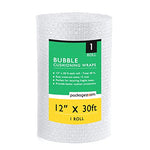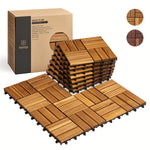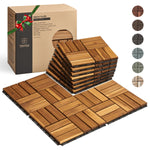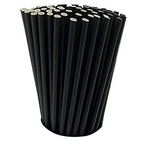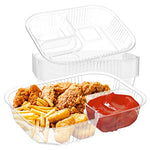You have no items in your shopping cart.
When it comes to roofing materials, plastic roof sheets have gained significant popularity due to their durability, versatility, and affordability. These lightweight sheets offer excellent protection against the elements while providing a range of design options. Whether you're looking to replace an existing roof or embark on a new construction project, plastic roof sheets offer numerous advantages. In this comprehensive guide, we will delve into the world of plastic roof sheets, exploring their features, installation process, maintenance tips, and more. Get ready to discover a roofing solution that combines durability, functionality, and aesthetic appeal.
Table of Contents:
-
What are Plastic Roof Sheets?
- A Closer Look at Plastic Roofing Materials
- Key Advantages of Plastic Roof Sheets
-
Benefits of Plastic Roof Sheets
- Durability that Withstands the Test of Time
- Versatility for Various Applications
- Cost-Effectiveness and Affordability
- Easy Installation Process
-
Choosing the Right Plastic Roof Sheets
- Understanding Material Types
- Evaluating Thickness and Weight
- Considering Transparency and Light Transmission
-
Installation Process
- Preparing the Roof Surface
- Measuring and Cutting the Sheets
- Fixing and Securing the Sheets
- Ensuring Proper Waterproofing
-
Maintenance Tips for Plastic Roof Sheets
- Regular Cleaning and Debris Removal
- Inspecting for Damage and Wear
- Addressing Leaks and Repairs
-
Frequently Asked Questions (FAQs)
- FAQ 1: Are plastic roof sheets suitable for all climates?
- FAQ 2: Can plastic roof sheets be recycled?
- FAQ 3: How long do plastic roof sheets last?
- FAQ 4: Are plastic roof sheets fire-resistant?
- FAQ 5: Can plastic roof sheets be painted?
- FAQ 6: How do I prevent condensation on plastic roof sheets?
- Conclusion
What are Plastic Roof Sheets? Plastic roof sheets, as the name suggests, are roofing materials made from plastic polymers. They are available in various forms, including polycarbonate, PVC, and acrylic. These sheets are designed to be lightweight yet highly durable, making them suitable for both residential and commercial applications. With their excellent weather resistance and long lifespan, plastic roof sheets have become a popular alternative to traditional roofing materials.
Benefits of Plastic Roof Sheets
Durability that Withstands the Test of Time Plastic roof sheets are known for their exceptional durability. They can withstand harsh weather conditions, including heavy rain, hailstorms, and strong winds. Unlike other roofing materials that may corrode or deteriorate over time, plastic roof sheets retain their structural integrity, ensuring long-lasting protection for your property.
Versatility for Various Applications One of the major advantages of plastic roof sheets is their versatility. They can be used in a wide range of applications, from residential homes and commercial buildings to greenhouses, carports, and patio covers. The ability to customize the size, shape, and color of plastic roof sheets provides homeowners and builders with endless design possibilities.
Cost-Effectiveness and Affordability Compared to traditional roofing materials such as metal or clay tiles, plastic roof sheets are significantly more affordable. Their lower cost makes them an attractive option for budget-conscious individuals or those undertaking large roofing projects. Additionally, the lightweight nature of plastic roof sheets reduces transportation and installation expenses.
Easy Installation Process Installing plastic roof sheets is a relatively straightforward process that can be completed by homeowners or professional contractors. The lightweight nature of the sheets makes handling and positioning them on the roof much easier. With the right tools and proper instructions, you can have your plastic roof sheets installed in no time.
Choosing the Right Plastic Roof Sheets
Understanding Material Types There are different types of plastic roof sheets available in the market, each with its unique characteristics and advantages. The most common options include polycarbonate, PVC, and acrylic. Polycarbonate sheets offer excellent impact resistance and high light transmission, making them suitable for areas requiring ample natural light. PVC sheets are known for their durability and fire resistance. Acrylic sheets are often chosen for their optical clarity and UV resistance.
Evaluating Thickness and Weight When selecting plastic roof sheets, it's crucial to consider the thickness and weight of the material. Thicker sheets tend to be more robust and offer better insulation properties. The weight of the sheets is also important, especially for installation purposes. Lighter sheets are easier to handle and require less structural support.
Considering Transparency and Light Transmission Depending on your specific needs, you can choose between transparent, translucent, or opaque plastic roof sheets. Transparent sheets allow maximum natural light penetration, making them ideal for areas such as greenhouses or sunrooms. Translucent sheets provide diffused light, while opaque sheets offer complete light blockage.
Installation Process
Preparing the Roof Surface Before installing plastic roof sheets, it's essential to prepare the roof surface properly. Start by ensuring the roof structure is sturdy and free from any damage. Clear away debris, dirt, or existing roofing materials. Repair any leaks or weak areas, and ensure the roof is structurally sound to support the weight of the plastic sheets.
Measuring and Cutting the Sheets Accurate measurements are crucial for a successful installation. Measure the dimensions of the roof area to determine the number of sheets required. Use appropriate tools, such as a circular saw or shears, to cut the plastic roof sheets to the desired size and shape. Remember to allow for any overlapping or joint sealing requirements.
Fixing and Securing the Sheets Once the sheets are cut, carefully position them on the roof, ensuring they align correctly and cover the entire area. Use appropriate fixing accessories, such as screws or nails, to secure the sheets to the roof structure. Pay attention to the manufacturer's instructions for recommended fixing methods and spacing.
Ensuring Proper Waterproofing To ensure the longevity and waterproofing of your plastic roof sheets, it's essential to pay attention to sealing and flashing details. Install appropriate flashing components at roof edges, joints, and penetrations to prevent water infiltration. Apply a suitable sealant or silicone along the edges and overlaps of the sheets to create a watertight seal.
Maintenance Tips for Plastic Roof Sheets
Regular Cleaning and Debris Removal To maintain the pristine condition of your plastic roof sheets, regular cleaning is necessary. Remove any debris, leaves, or dirt that may accumulate on the surface. Use a soft brush or sponge and mild detergent to gently clean the sheets. Avoid using abrasive materials or harsh chemicals that could cause damage.
Inspecting for Damage and Wear Periodically inspect your plastic roof sheets for any signs of damage or wear. Look for cracks, scratches, or discolored areas that may indicate deterioration. Promptly address any issues to prevent further damage and ensure the long-term performance of your roofing system.
Addressing Leaks and Repairs In the event of a leak or damage to your plastic roof sheets, it's essential to address the issue promptly. Identify the source of the leak and repair it using appropriate sealants or patches. If the damage is severe, consider consulting a professional roofer for repairs or replacements.
Frequently Asked Questions (FAQs)
FAQ 1: Are plastic roof sheets suitable for all climates? Yes, plastic roof sheets are designed to withstand various climatic conditions. They have excellent weather resistance and can handle extreme temperatures, heavy rainfall, and high winds. However, it's essential to choose the right type of plastic roof sheets based on the specific climate of your region.
FAQ 2: Can plastic roof sheets be recycled? Yes, many plastic roof sheets are recyclable. Polycarbonate and PVC sheets, in particular, can be recycled into new plastic products. Recycling plastic roof sheets not only helps reduce waste but also contributes to sustainable practices.
FAQ 3: How long do plastic roof sheets last? The lifespan of plastic roof sheets can vary depending on the material, quality, and environmental factors. On average, high-quality plastic roof sheets can last anywhere between 20 to 30 years or even longer with proper maintenance and care.
FAQ 4: Are plastic roof sheets fire-resistant? Plastic roof sheets made from materials such as PVC are inherently fire-resistant. They have a high ignition point, which means they are less likely to catch fire. However, it's important to note that fire resistance can vary depending on the specific composition and additives of the plastic material.
FAQ 5: Can plastic roof sheets be painted? Yes, some plastic roof sheets can be painted to match your desired aesthetic. However, it's crucial to use the appropriate type of paint that is compatible with the plastic material. Consult the manufacturer's guidelines or seek professional advice for the best painting practices.
FAQ 6: How do I prevent condensation on plastic roof sheets? Condensation can occur on the underside of plastic roof sheets, particularly in areas with high humidity. To prevent condensation, ensure proper ventilation and airflow in the roof space. Use breathable insulation materials and install adequate ventilation openings or systems as recommended by building codes or roofing professionals.
Conclusion Plastic roof sheets offer an array of benefits that make them a popular choice for residential and commercial roofing projects. Their durability, versatility, affordability, and easy installation process make them an attractive alternative to traditional roofing materials. By choosing the right plastic roof sheets, following proper installation procedures, and implementing regular maintenance practices, you can enjoy a long-lasting and visually appealing roofing solution. Consider the specific needs of your project, consult with experts, and make an informed decision to embrace the advantages of plastic roof sheets.



